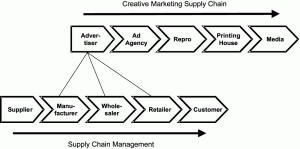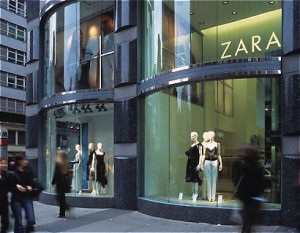
intricate link between marketing and supply chain as seen from http://marketingplanbook.com/2010/02/22/marketing-strategy-supply-chain-management/

stages of marketing within supply chain taken from http://www.emeraldinsight.com/journals.htm?articleid=1509222&show=html
Article taken from : http://www.strategy-business.com/article/11418?pg=0
In class, we talked about how marketing focuses on top-line revenue and, accordingly, seeks product variety (available on short notice) from well-stocked inventory pools. Operations worry about cost, looking for efficiencies in manufacturing and the supply chain.
An intriguing point was how a lot of companies fail to focus on creating value for customers. A notable example would be Amazon. The name referring to the tension between marketing and supply chain is Differentiated Service Policies.
Marketing wants to offer the broadest possible array of titles to reinforce Amazon’s sales pitch of having huge variety and delivering those titles instantaneously to reinforce the convenience of online shopping. Operations, on the other hand, cannot support such a proposition — at least not cost-effectively.
It tries to address this conflict by examining the economics of inventory and understanding the value of lead time to customers. Thereafter, it sets shipment lead times to come to a good compromise between marketing and operations.
Another underrated solution is to use price to drive customer behavior ranks among. Companies should also consider option bundling to increase complexity and offer a variety of services to customers. Examples include packaging complementary products that are easy to market and supply.



